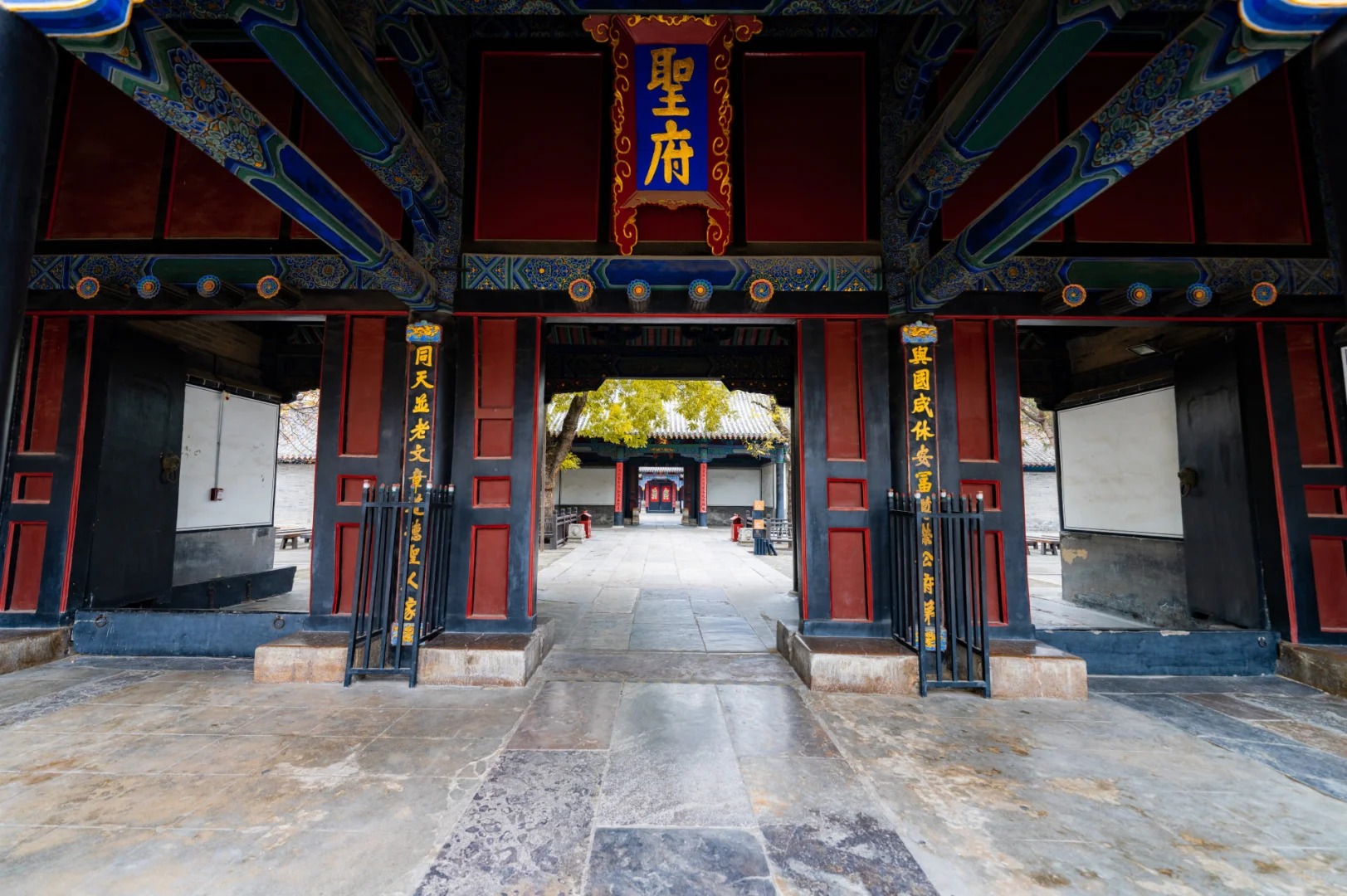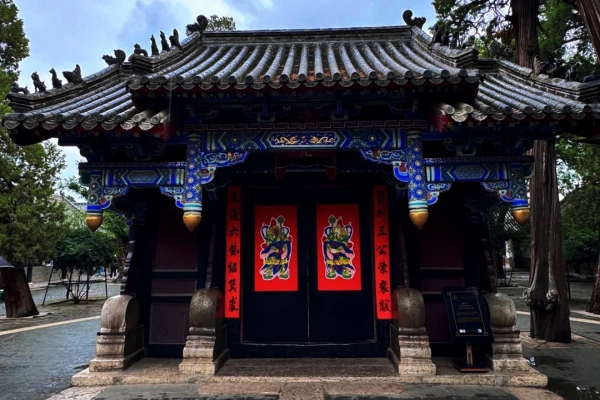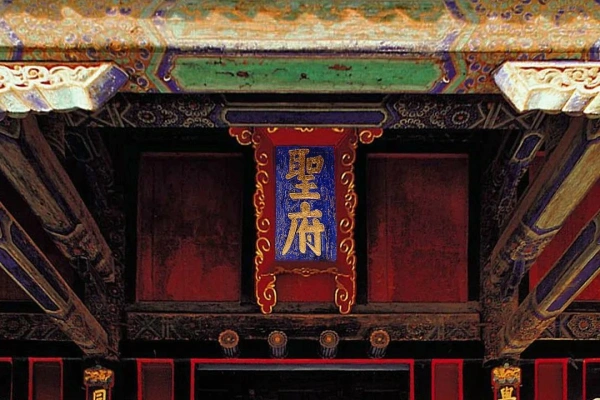Kong Family Mansion

Historical Overview
The Kong Family Mansion has a long and illustrious history. It was initially built during the Song Dynasty and has undergone multiple renovations and expansions over the centuries. In the Ming Dynasty, it was rebuilt on a larger scale, and in the Qing Dynasty, it reached its current grandeur. The mansion witnessed the rise and fall of dynasties and the evolution of Chinese society. It also played a crucial role in preserving and promoting Confucian culture, as the Kong family was responsible for safeguarding the teachings of Confucius and conducting various rituals and academic activities. During the modern era, the mansion has been well - protected and restored to maintain its historical and cultural value.
Structural Layout
The Kong Family Mansion is a large - scale complex with a well - organized layout. It is divided into three main parts: the central part, the eastern part, and the western part. The central part is the core area, which includes the main halls and the living quarters of the main family members. The eastern part mainly contains the study rooms and the places for storing cultural relics and books. The western part is used for the living spaces of the servants and the storage of daily necessities. The buildings are arranged in a symmetrical pattern, with courtyards and gardens interspersed, creating a harmonious and tranquil environment.
Major Attractions
The main halls in the central part are the most eye - catching attractions. The Dacheng Hall is the largest and most important hall, where important ceremonies and rituals were held. It features magnificent architecture with exquisite carvings and paintings on the beams and pillars. The Kuiwen Pavilion is another significant building, which was used to store Confucian classics and historical documents. It has a unique architectural style and is surrounded by beautiful gardens. The eastern part of the mansion has a rich collection of cultural relics, including ancient books, calligraphy works, and paintings, which provide valuable insights into Chinese History and Culture.

Cultural Significance
The Kong Family Mansion is not only an architectural marvel but also a cultural treasure trove. It is closely related to Confucianism, the dominant ideology in Chinese history for over two thousand years. The layout and decorations of the mansion reflect the values and principles of Confucianism, such as filial piety, loyalty, and harmony. The cultural relics stored in the mansion are important carriers of Confucian culture, including the works of Confucius and his disciples, as well as the commentaries and interpretations by later scholars. The mansion also serves as a center for the study and dissemination of Confucian culture, attracting scholars and researchers from all over the world.
Suggested Itineraries
Short Visit(1 - 2Hours)
Start from the main gate and enter the central part of the mansion. Visit the Dacheng Hall to appreciate its grand architecture and learn about the important ceremonies held here. Then, stroll through the courtyards and gardens to experience the tranquil atmosphere. Finally, visit the Kuiwen Pavilion to see the collection of cultural relics.
MediumVisit (3 - 4Hours)
In addition to the above - mentioned attractions, explore the eastern part of the mansion. Visit the study rooms and the exhibition areas to view the ancient books, calligraphy works, and paintings. Take your time to understand the cultural significance of these relics and their connection to Confucianism.
In - depth Visit (FullDay)
Begin with a comprehensive tour of the central and eastern parts of the mansion, as described in the medium - visit itinerary. In the afternoon, participate in any cultural activities or lectures that may be available, such as traditional Chinese music performances or Confucian philosophy seminars. You can also interact with the local guides or scholars to gain a deeper understanding of the history and culture of the Kong Family Mansion.
Ticket Purchase
Tickets for the Kong Family Mansion can be purchased both online and on - site. Online booking is available through the official website or authorized travel platforms, allowing you to reserve tickets in advance and avoid long queues. On - site ticket purchase is also possible, but it may be more time - consuming, especially during peak tourist seasons. The ticket prices vary depending on the season and the type of ticket. Standard adult tickets are usually priced at a certain amount, while there are discounts for students, seniors, and children. Special exhibition tickets may have additional charges. Guided tours are also available for an extra fee, which can enhance your visiting experience by providing detailed explanations and insights.

Transportation
BySubway: You can take the subway to the nearest station and then transfer to a local bus or take a taxi to reach the Kong Family Mansion. The subway is a convenient and efficient way to travel, especially if you are coming from the city center.
By Bus: There are several bus routes that pass by the Kong Family Mansion. You can check the local bus schedule and choose the most suitable route. Bus travel is a cost - effective option, but it may be affected by traffic conditions.
By Taxi: Taking a taxi is a direct and comfortable way to get to the mansion. You can tell the driver the name of the attraction in Chinese or show them the address. However, be aware of potential traffic jams during peak hours.
By Car: If you are traveling in a group or have your own vehicle, you can drive to the Kong Family Mansion. There is parking available near the attraction, but the parking spaces may be limited during busy periods.
Best Time & Tips
BestTime: The best time to visit the Kong Family Mansion is during spring and autumn when the weather is mild and pleasant. The gardens are in full bloom in spring, and the autumn foliage adds a touch of color to the scenery. Avoid visiting during national holidays and weekends if possible, as the mansion can be very crowded.
Tips: Wear comfortable shoes as you will be doing a lot of walking. Bring a camera to capture the beautiful architecture and scenery, but be mindful of the photography regulations in some areas. Respect the cultural heritage of the mansion and follow the instructions of the staff. It is also a good idea to bring some water and snacks, especially if you plan to have a long visit.
Contact Us
What Our Clients Say?
Based on 10,000+ traveler reviews














